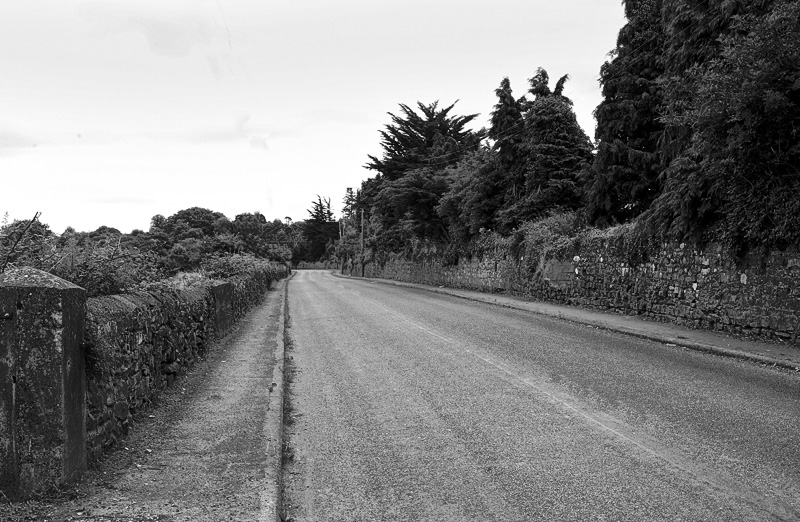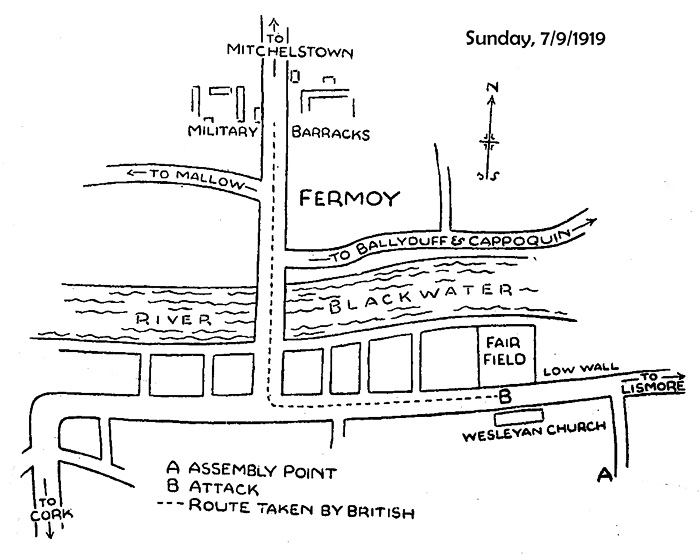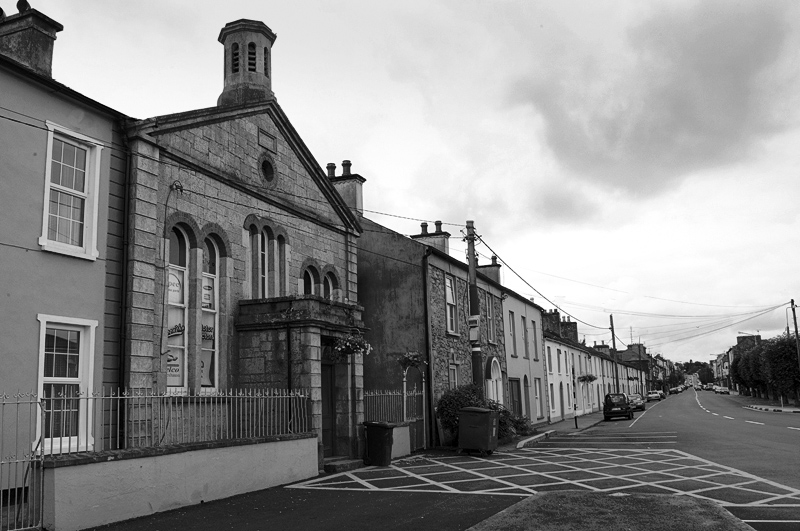Arms Captured in Attack on Military at Fermoy
The former Wesleyan Church in Fermoy near where the British soldiers were attacked while on their way to attend service.
The first organised action against British military forces since the 1916 rising, took place at Fermoy on Sunday, September 7, 1919. It was carried out by Cork No. 2 Brigade under the command of Liam Lynch. Their objective was an armed party of British soldiers who attended Sunday service at the Wesleyan Church at the eastern end of the town of Fermoy, the church being about half a mile from their barracks. It was not known if the rifles they carried were loaded but the assumption was that they were and plans were made for that contingency.
About 10.30 on Sunday morning, September 7, 1919, fourteen soldiers and a corporal left their barracks and marched through the town towards the Wesleyan Church. They carried their rifles at the slope. Approximately twenty-five volunteers from Fermoy company, armed with just six revolvers between them, assembled in groups of two and three in the vicinity of the Church, remaining well spread out to avoid attracting attention. The main attacking party of which Larry Condon was in charge, included John Fanning Michael Fitzgerald, Patrick Ahern and James Fitzgerald. Another group was detailed to collect the rifles and transfer them to cars parked nearby, while the remainder were to close in from the rear when the attack began and prevent any attempt by the British to get back to their barracks. Any volunteers who were unarmed carried short clubs hidden on their person.

The attackers drove out the Lismore road ferrying the captured arms to safety. A roadblock about a mile from this scene halted the British pursuit.
One of the cars, with George Power in charge, was halted near the Church, with two men attending to an imaginary breakdown. The second car, in which Liam Lynch was, drove up Patrick Street behind the party of soldiers, timing it to arrive at the Church at the same moment that they did. A whistle blast began the assault. Liam Lynch called on the soldiers to surrender but they immediately resisted. The attackers rushed them, shots were fired and for a minute or two there was a confused struggle. A soldier swinging a rifle butt at Lynch was shot dead while three others were wounded. When the soldiers were finally overpowered their rifles were taken from them and piled into the Buick driven by Leo O'Callaghan. Into that car also went Liam Lynch, Owen Harold, Ned Waters, Tom Griffin, Larry Condon, Michael Fitzgerald and John Fanning while Jack Mulvey's Ford contained Pat Leahy, John Joe Hogan, Peter O'Callaghan, George Power and Dan Hegarty. Both cars headed out the Tallow road while the remaining volunteers scattered on foot.
Shortly afterwards a bugle call at the barracks raised the alarm and within minutes two lorry loads of military were speeding out the Lismore road in pursuit. However, at Carrigabrick, a mile and a quarter from the town, two trees on the road side had been partly sawn through and then held in position by ropes. The moment the cars carrying the rifles passed, the trees came down with a crash thereby forcing the pursuers to make a detour and lose the trail. At Kilmagner, five miles from Fermoy, the rifles were taken to a pre-arranged spot and safely concealed. The following night they were transferred to a dump in the Araglen company area.

Much thought had been given to the selection of officers and men for the task. It was inevitable that those of them who were well known locally would thereafter have to evade arrest. Intensive searches by military and police continued throughout the day. Parties of military in lorries scoured the countryside, cars were held up and many people questioned. Two days later the district was proclaimed a military area.
On the Monday night following the raid a large party of soldiers from the British garrison at Fermoy descended upon the town. They smashed the windows in most of the shops in Pearse Square, MacCurtain Street and Patrick Street and looted the contents. The following night the troops were confined to barracks, but on the Wednesday night they assembled again but found a large crowd of residents waiting for them in Emmet Street. Armed with sticks, stones and other weapons, the local people attacked the soldiers so furiously that they were driven back to their barracks. Many citizens barricaded their homes and premises and prepared to defend them against further attack, but by Thursday the spate of lawlessness appeared to be over for the moment.
However, arrests soon followed. Local Battalion Commandant Michael Fitzgerald, Vice Commandant Larry Condon and Fermoy Company Captain, John Fanning, were amongst those detained. Others arrested were James Fanning, John Swaine, John Joe Hogan, Martin O'Keeffe, Dick O'Keeffe, Pat Leahy, Tom Griffin, Peter O'Callaghan and Jack Mulvey. Two months later further arrests were made at Mallow. Dan Hegarty, Brian Kelly, Ned Waters, Owen Harold and Leo O'Callaghan were detained. After a series of weekly remands, the prisoners were returned for trial at the Cork Assizes in July, 1920. At Cork the Grand Jury found against Michael Fitzgerald, John Joe Hogan and Dan Hegarty. The remainder were released.






